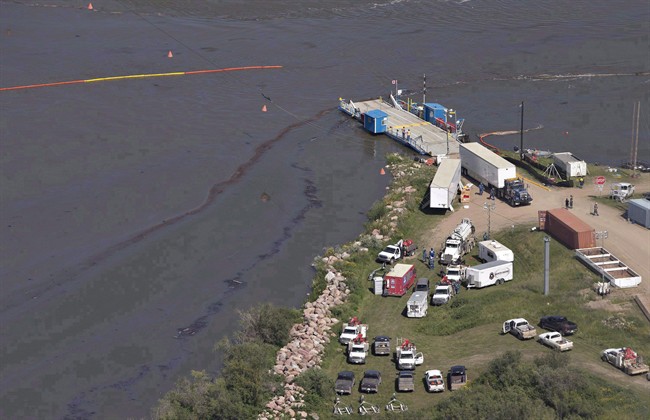Husky Energy has begun holding open houses to discuss building new pipelines to replace the one that leaked in 2016.

The Calgary-based company’s plan proposes the two pipelines be built to transport blended crude and condensate to Lloydminster from across the river.
The pipelines would be located in the rural municipalities of Britannia, Eldon and Frenchman Butte.
Husky Energy says its changed its operating procedures, and that the new lines would be tougher and better placed than the old one.
The Saskatchewan Environmental Society (SES) welcomed the news, but wants further preventative steps to be taken by the company.
“What I’ll be looking for is having automatic shut off valves installed in the new pipeline, so that if there is a spill, the line is shut down,” Peter Prebble, a board member with the SES, said.
The Husky spill caused more than 225,000 litres of diluted heavy oil to leak. About 40 per cent of the oil went into the river near Maidstone. The spill forced Prince Albert and other communities to shut down their water supplies.
SES is calling on Husky to research and implement new spill detection technology like acoustic systems, fibre-optic temperature monitors, as well as vapour sensing technology installed outside the pipeline.
“One of these options should be adopted by Husky on this new line where it crosses rivers,” Prebble said.
Husky was later charged with violating provincial and federal environmental laws and court proceedings in the case are still ongoing. SES believes part of the settlement with the province should include provincial inspections of all Husky pipelines that cross bodies of water and recommend upgrades when necessary.
“It requires leadership from the province with inspectors going out there and checking where the lines may be inadequate and requiring improvements where needed,” Prebble said.
SES is also calling for inspections after rain events.
More consultation is required, but Husky hopes to begin construction in the fall and should take between 10 and 12 months to complete.


Comments